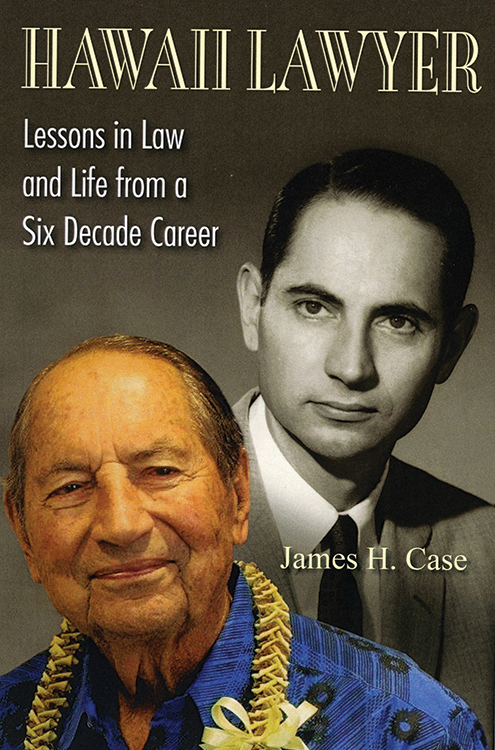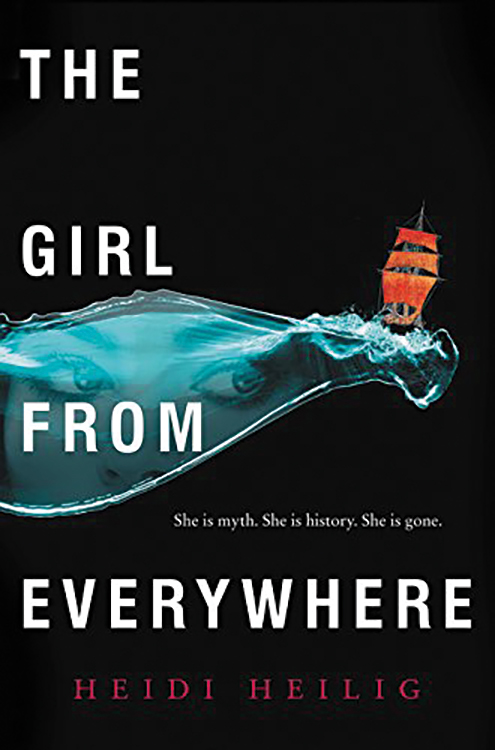
Dragonfruit
By Malia Mattoch ’87 McManus
Reviewed by Malia Boyd ’87
“A baby is never a bad thing. Women been having babies at the wrong time forever. In the old days here, there was no wrong time. Whenever the baby came and whoever the father, no bother. Now we’re getting complicated. But love is never shame.” So says the native Hawaiian housekeeper, Mehana, in “Dragonfruit,” a novel set in 1890s Hawai‘i. But she’s not the one grappling with this life-changing revelation.
Eliza Dawson, daughter of a sugar baron, granddaughter of Protestant missionaries, is pregnant, unmarried and fiercely determined to keep her baby. Yet this child and what will become of it is not the only powerful motor driving the well-oiled narrative of Malia Mattoch ’87 MacManus’s first novel.
We learn early on that Eliza has cast her lot in loyal service to the Hawaiian monarchy; Princess Ka‘iulani is her best friend and confidante. This outwardly staid haole woman becomes a rebel spy and risks her life passing vital information to Queen Lili‘uokalani during the struggle between the men of the Provisional Government and the Royalists.
These twin plots – the baby and Hawai‘i’s quest to retain independence – are what make McManus’s novel so compelling. We already know how part of this story ends: the Queen loses her throne and Hawai‘i is annexed by the United States. Yet McManus gets us to those inexorable conclusions in ways that are surprising and satisfying: the unplanned pregnancy, an unwanted marriage, a narrow escape aided and abetted by the residents of Kalaupapa, encounters with opium addicts and prostitutes, even a friendship with the effervescent Robert Louis Stevenson.
You know you are reading well-wrought historical fiction when you learn about history and its repercussions without ever realizing you are being schooled, riveted as you are by the page-turning story at hand.
McManus reveals the scourge of smallpox and measles and the toll they took on Native Hawaiians. She vividly catalogues the horrors of Hansen’s disease, which claims one of her more prominent characters, and so many of the Hawaiian people themselves. She reveals the pandering arrogance of the missionary descendants, who stole the Hawaiians’ land and crushed their way of life, while speaking of high-minded ideals like monotheism and democracy.
Yet beyond the Hawaiian history and the personal adventures of her heroine, some of McManus’s best writing comes from describing the quotidian marvels that living in Hawai‘i affords us all: the crackling sound of night-blooming cereus, the confounding physics of the upside-down waterfalls on the Nu‘uanu Pali, and the image of a mammoth humpback whale sighing and rolling with the moonlit ocean swells in the Kaiwi Channel.
The book is dedicated to Heather Ho ’87, our close friend and classmate who died tragically in 2001. There are threads of Heather woven throughout the book: in the Chinese family who lives next door to the Dawsons, in a nightmare Eliza has after a terrible house fire, and perhaps most strongly in the character of Ka‘iulani, a strong, intelligent, brave beauty who was perched on the edge of greatness when she was taken far too soon from the people who loved and needed her.

Hawaii Lawyer: Lessons in Law and Life from a Six Decade Career
By James Case ’37
Reviewed by Denby Fawcett ’59
At age 97, James Case ’37 has published a book filled with fascinating behind-the-scenes stories about his 61-year career as an attorney and partner in the law firm now known as Carlsmith Ball. Many of the law firm’s transactions played a key part in the tidal wave of activity that transformed Hawai‘i from a sleepy U.S. territory dependent on agriculture to a force in today’s rapidly changing global economy.
One of the projects Case is especially proud of is his role in Carlsmith’s successful quest to help 6,000 clients eventually acquire fee simple title to their land by using the Hawai‘i Land Reform Act of 1967 to challenge landowner Bishop Estate up to the U.S. Supreme Court.
Case was born in his parents’ home at Grove Farm Plantation in Lihue, Kaua‘i, in 1920 when the population of the entire state was only 250,000. He writes, “When I grew up, sugar, pineapple and ranching were king.”
Case was valedictorian at Punahou where he says his experience as a boarder made him tougher, more resilient. After graduating from Williams College, he then served as a Navy officer in World War II and graduated from Harvard Law School. He joined the Carlsmith law firm in 1951.
The Case family has a long history practicing law. Even Case’s great-grandmother was a lawyer, riding the circuit in Kansas after the Civil War with her husband and a judge, picking up clients and doing trials on the go.
Case’s book highlights the Carlsmith firm’s many legal successes, including persuading the Democratic Party controlled state government to purchase all the land around Honolulu Harbor from the staunch Republicans, Lowell (1929) and Ben Dillingham (1934). Wendell Carlsmith was able to convince his labor negotiations opponent – but friend – Jack Hall of the ILWU to persuade then Governor John Burns the purchase would be good for the State.
Also outlined in the book are difficult challenges such as Case’s initial inability to persuade a reluctant J.W.A. “Doc” Buyers to retire as chief executive officer of Mauna Loa Macadamia Partners after it was confirmed that Buyers had Alzheimer’s disease. Case said, “It was such a difficult problem. I couldn’t sleep at night.” The interesting story is how Case finally figured out a way to get Buyers to step down.
Case says his original intent for the book was to record his memories only to add to the personal history of the Case family in the Islands, which stretches back to 1896 when his grandfather, Daniel H. Case moved from Topeka, Kansas, to the Republic of Hawai‘i to work as an apprentice lawyer. After daughter Suzanne Case ’74 taped and transcribed his stories, Case says he realized other people might be interested in the historic span of his work.
The book is as much about the genius of his law partner and mentor Wendell Carlsmith as it is about Case himself. Interestingly, today we think of Wendell Carlsmith and his brother Merrill as the Carlsmiths but, as Case writes, their first ancestor to arrive in Hawai‘i in 1897 was Carl Schurz Smith (originally Schmidt) a German-American born in Vermont.
In 1911, Smith legally changed his last name and the names of his wife and four children to Carlsmith. Case says the story goes that Carl S. Smith did that to distinguish himself from the other attorneys in Hilo named Smith, one of whom mistakenly received a confidential letter addressed to Carl.
Case says an important lesson he learned in his long and event-filled career is the lawyers’ adage “Clients are always right – even when they aren’t.”

The Girl from Everywhere
By Heidi Hansen-Young ’98 Heilig
Reviewed by Phoebe Neel
Heidi Hansen-Young ’98 Heilig has written a galloping racehorse of a tale in “The Girl from Everywhere,” a text that dances across time, space and reality to turn all the beliefs we hold for granted upside down. It’s one part girl-power adventure, one part a philosophical questioning of reality and time, and another part study of myths and history come to life. As the book itself spans millennia, its readership can span generations; it has all the components to keep young readers along for the rollicking ride and older readers scrambling to keep up with the heroine’s twists and turns of logic.
The book opens as we grab hold to the back of Nix Song, a book-wise, ship-smart sailor aboard her father’s ship that can transcend time. He’s one of the rare “Navigators,” a chosen few who can travel to any time and place with the aid of a map drawn at that time. Nix is his right-hand mate and we find her helping him carry out his sole mission: to find a map of Honolulu from when his wife was still alive, so he can save her from untimely death during childbirth. The hitch is, her father’s passion for her mother has blinded him to the fact that returning to an era before Nix’s birth may erase his daughter’s existence altogether. What’s worse, she’s not sure if he cares.
Nix wrestles with her sense of self-preservation and her ache to be recognized and loved by him, as she masterminds plans to amass fortunes necessary to procure the specific map he needs. The characters in the book spin around gut-wrenching questions of love: Is love earned or deserved? Is there anything that people won’t do for love? In a world where people aren’t tethered to time or place, loved ones are the only home there is.
We watch as Nix begins to uncover the rules of an unwritten world to save herself and her shipmates. In this world, one can walk into a living legend; a dream laid out in a map can become a real road to an imaginary destination. Unlike most books which play fast and loose with time and space, Heilig isn’t so much asking us to suspend our disbelief as much as challenging our very notions of reality.
While the text is anchored in deep questions, there’s enough mischief and merriment to keep things light. Heilig’s background in musical theater is written into all of the banter between characters; particularly between Nix and her Cheshire-cat best friend and blooming love interest, Kashmir. With its colorful characters and larger-than-life settings, this tale is absolutely worth a read.
